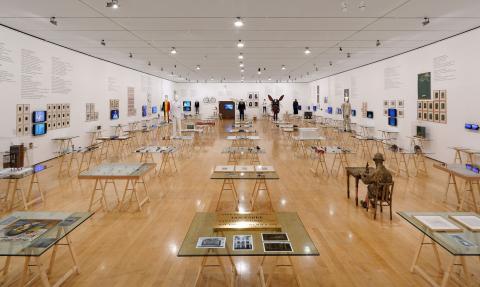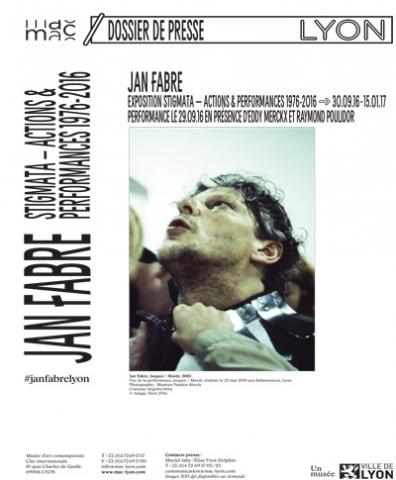
40 years of creation: how do you exhibit performance?
87 glass trays, 800 objects (drawings, photographs, artefacts, costumes, models which he calls “thought models”, films, works in blue ballpoint pen, and more): all Jan Fabre’s performances.
A collaboration between Jan Fabre and Germano Celant.
More information
Performances 1976-2016 presents all his performances since 1976, including his most recent, which was performed on 29 September 2016 in Lyon: An attempt to not beat the world hour record set by Eddy Merckx in Mexico City in 1972 (or how to remain a dwarf in a land of giants). Designed by Jan Fabre and Germano Celant as a landscape, the scenography covers the whole of the exhibition space “like a sort of river streaming with an avalanche of materials”. As Jan Fabre explains, “We decided on the landscape first—tables with photographs, press reports and thought models, then we planted the trees, the “costume-sculptures”, in the landscape. The third stage was to create the horizon: the walls with quotations from my Journal de nuit, drawings, photographs and screens.”
The exhibition’s set-up is a radical extension of his 1978 piece Objects to break in and to fight, where instruments of performances were displayed on his personal worktable, a glass top on sawhorses. In a stream of eighty-seven tables, memories from these performances are brought to life in the most varied of ways: not just through the objects Fabre employed, but also ‘thinking models’, drawings, photographs and all sorts of documents. Here and there costumes arise from this stream and give shape to his performances. The exhibition continues on the museum’s walls, with projections of film and video recordings, monumental photographs, drawings and quotations from Fabre’s Night Journals. Jan Fabre’s actions and performances reverberate in powerful presentation.
The exhibition Stigmata, Actions & Performances 1976–2013 was originally conceived by Jan Fabre and Germano Celant for the MAXXI in Rome, and then presented in the M HKA in Antwerp.









